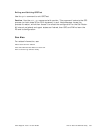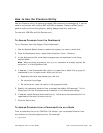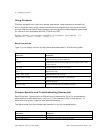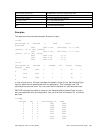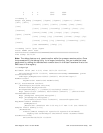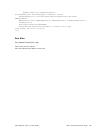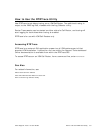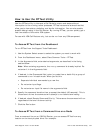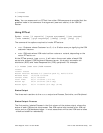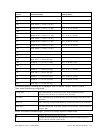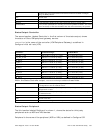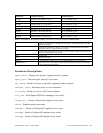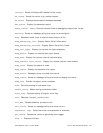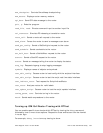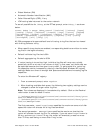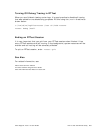Cisco Support Tools 1.0 User Guide How to Use the RTTest Utility 193
c:\>rttest
d:\temp>rttest
Note: You can access and run RTTest from other ICM components provided that the
specified node in the command line argument (see next section) is an ICM Call
Router.
Using RTTest
Syntax: rttest [/f InputFile] [/system SystemName] [/cust Customer]
[/node ICRNode] [/pipe OutputPipe] [/debug] [/stop] [/help] [/?]
The command line options required to invoke RTTest are:
• cust: Customer where Customer is a 3, 4, or 5 letter acronym signifying the ICM
customer instance.
• node: ICM node where ICM node is either routera or routerb, depending on the
router RTTest to run.
At the RTTest prompt, type status. It will return the current state of each ICM
central site process, ICM Peripheral Gateway server, third-party automatic call
distributor (ACD) and Voice Response Unit (VRU) peripheral. For example:
c:\> rttest /cust csco /node routera
rttest:
rttest: status
Router Version: Release 2.5 (service pack 2), Build 03134
Release Date: 12/23/98 13:30:08
Current Time: 03/17 16:00:42
Local Time: 03/17 11:00:42 (-5.0 hr)
Router Up: 02/21 01:01:45 (24.6 day)
Router Sync: 03/11 11:06:20 (6.2 day) (A->B)
Status Output
The three main sections to the status output are Process, Controller, and Peripheral.
Status Output: Process
The first section, labeled Process in the first column of the status output, shows the
status of each ICM central site process. One ICM central site consists of an ICM call
router and an ICM database logger. In most cases there will be two ICM central sites
- sideA and sideB for redundancy.



